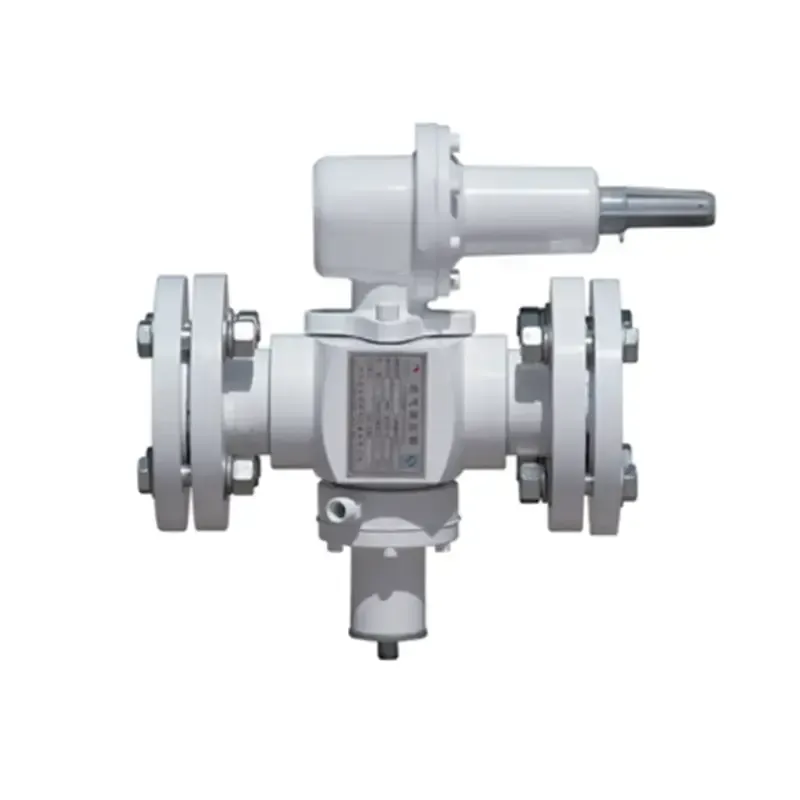
Nov . 10, 2024 13:35
Back to list
Understanding the Functionality of Pressure Regulation Devices in Various Applications
Understanding Pressure Regulating Devices An Essential Component in Fluid Systems
Pressure regulating devices play a critical role in a variety of applications across multiple industries. From domestic water supply systems to complex industrial processes, these devices ensure that pressure levels remain within safe and efficient limits. By maintaining appropriate pressure, these devices help protect equipment, enhance performance, and ensure the safety of both personnel and infrastructure.
What is a Pressure Regulating Device?
A pressure regulating device, commonly referred to as a pressure regulator, is a mechanical or electronic tool designed to control and stabilize the output pressure of a fluid system. These devices automatically adjust the flow of fluid to maintain a predetermined pressure level against fluctuations in the supply pressure or variable demand. Pressure regulators can be found in gas, hydraulic, and water systems and are essential for applications ranging from domestic uses, like regulating household water pressure, to complex industrial scenarios, such as managing pressure in gas pipelines.
How Does it Work?
The mechanism of a pressure regulator generally involves a sensing element, a valve, and a spring. The sensing element detects variations in output pressure, transmitting feedback to the valve. If the output pressure exceeds the set point, the valve closes to restrict flow. Conversely, if the output pressure drops, the valve opens to allow more fluid to pass through. This dynamic adjustment ensures that the pressure remains constant, even as upstream conditions change.
Pressure regulators may be classified into two main types direct-acting and pilot-operated regulators. Direct-acting regulators are simpler and suitable for low-flow applications, while pilot-operated regulators are designed for higher flow rates and more complex pressure control requirements.
Applications of Pressure Regulating Devices
1. Residential Use In homes, pressure regulators are often installed to manage water pressure from municipal water supplies, preventing damage to plumbing fixtures and appliances. They ensure that water pressure remains within a safe range, typically between 40 and 60 psi, which is ideal for daily use.
pressure regulating device

2. Industrial Applications In manufacturing and processing industries, precise pressure control is crucial. Pressure regulators maintain optimal operating conditions for equipment like compressors, boilers, and chemical reactors, which rely on consistent pressure levels for efficiency and safety.
3. Gas Distribution In natural gas distribution, regulators are essential for maintaining safe pressure levels throughout pipelines. As natural gas is transported from high-pressure transmission lines to lower-pressure distribution systems, regulators help manage this transition to prevent explosions and ensure reliable service to consumers.
4. Healthcare In medical settings, pressure regulators are vital for delivering gases such as oxygen to patients. They ensure that gases are provided at safe and effective pressures, critical for various types of medical equipment, including ventilators and anesthetic machines.
Benefits of Using Pressure Regulating Devices
The primary benefit of employing pressure regulating devices is enhanced safety. By ensuring that pressures do not exceed specified limits, these devices help prevent equipment failures, leaks, and catastrophic accidents. Additionally, regulators improve efficiency by optimizing fluid flow, reducing waste, and maintaining consistent process parameters.
Moreover, pressure regulators can extend the lifespan of equipment by minimizing wear and tear caused by pressure fluctuations. This prolongs maintenance intervals and reduces overall operational costs for businesses. In regulated industries, using these devices also ensures compliance with safety standards and regulations, protecting both personnel and the environment.
Conclusion
Pressure regulating devices are indispensable tools in modern fluid systems. They enhance operational efficiency, ensure safety, and protect infrastructure across various applications. As industries continue to evolve and demand more sophisticated solutions for pressure management, the importance of pressure regulators will only continue to grow. To ensure optimal performance in any fluid system, the selection and maintenance of the appropriate pressure regulating device should be a priority for engineers and operators alike. By investing in the right technology, businesses can safeguard their operations and maintain the integrity of their systems.
Latest news
-
Safety Valve Spring-Loaded Design Overpressure ProtectionNewsJul.25,2025
-
Precision Voltage Regulator AC5 Accuracy Grade PerformanceNewsJul.25,2025
-
Natural Gas Pressure Regulating Skid Industrial Pipeline ApplicationsNewsJul.25,2025
-
Natural Gas Filter Stainless Steel Mesh Element DesignNewsJul.25,2025
-
Gas Pressure Regulator Valve Direct-Acting Spring-Loaded DesignNewsJul.25,2025
-
Decompression Equipment Multi-Stage Heat Exchange System DesignNewsJul.25,2025

